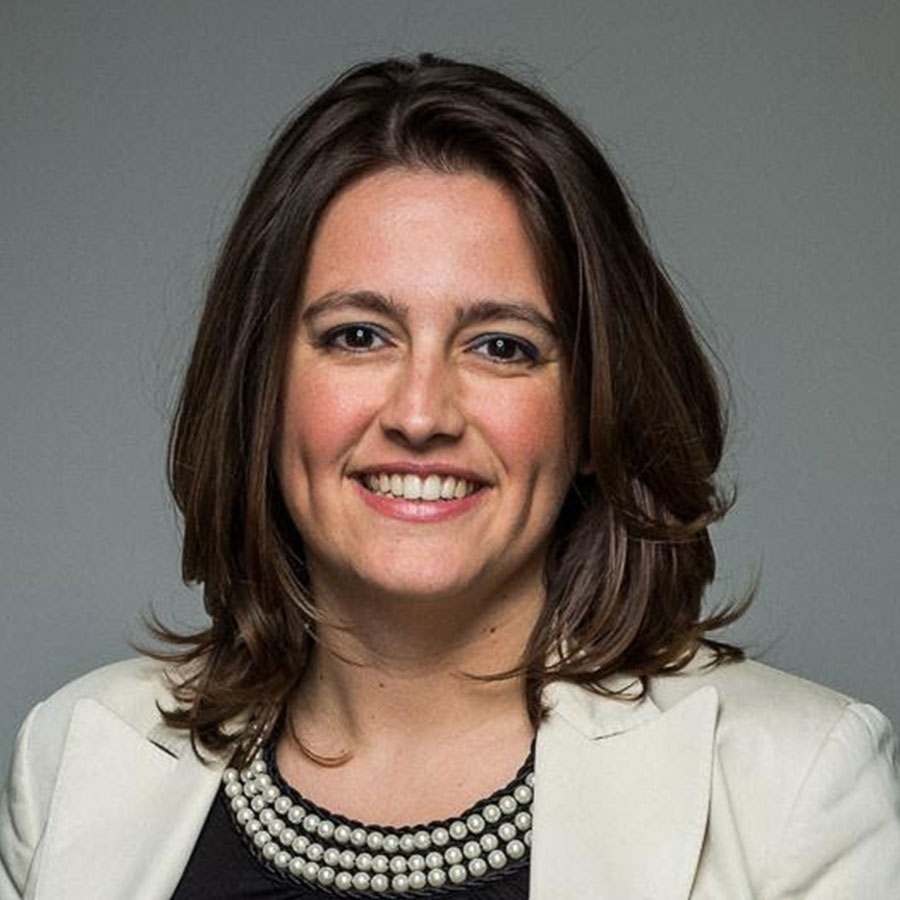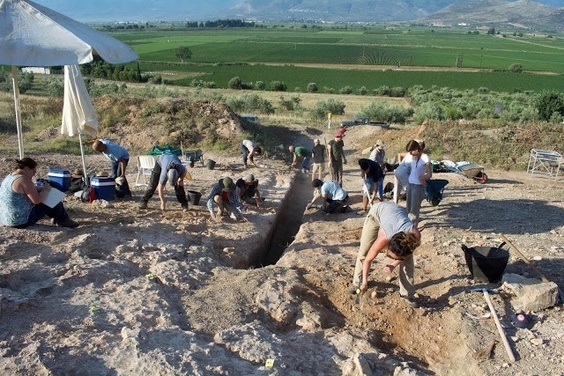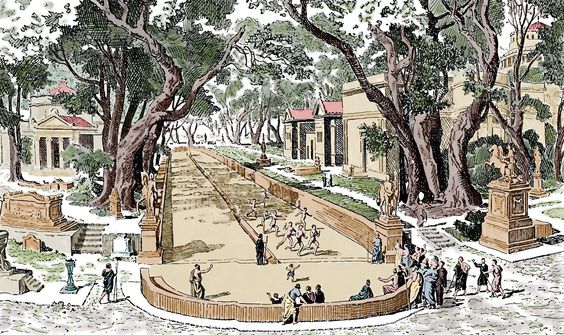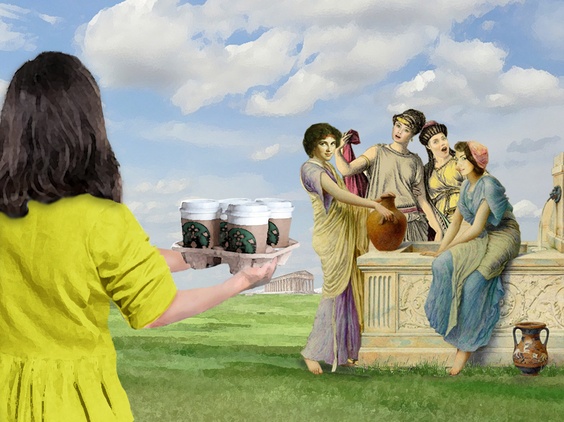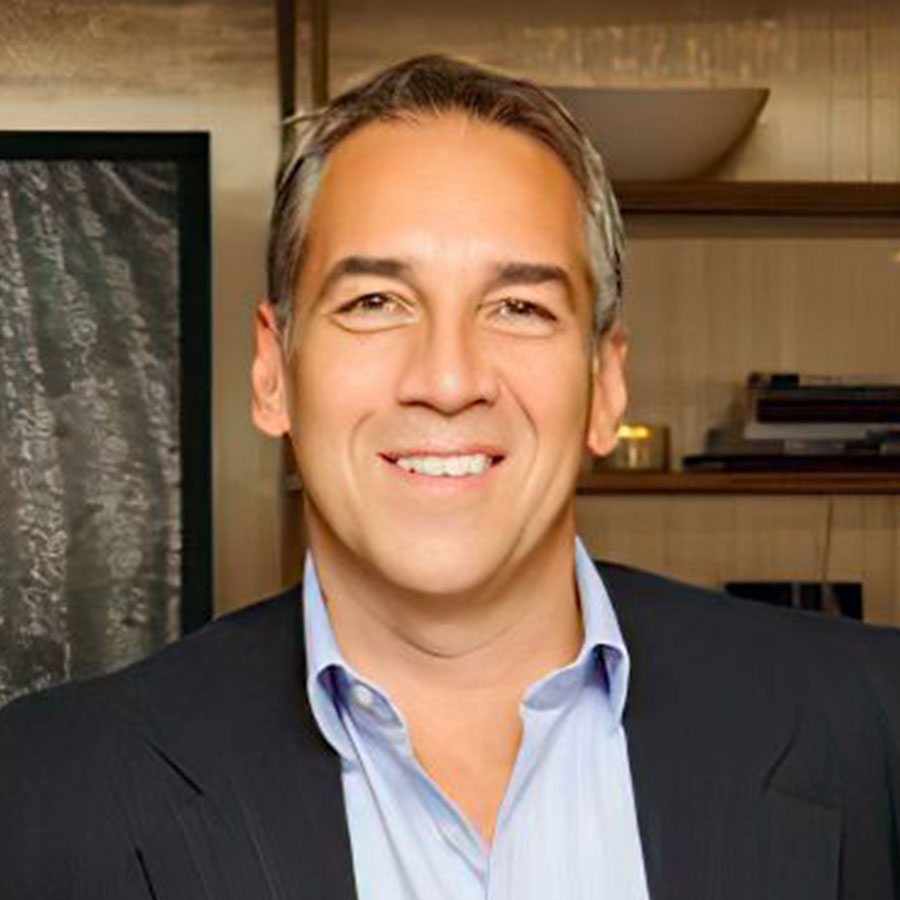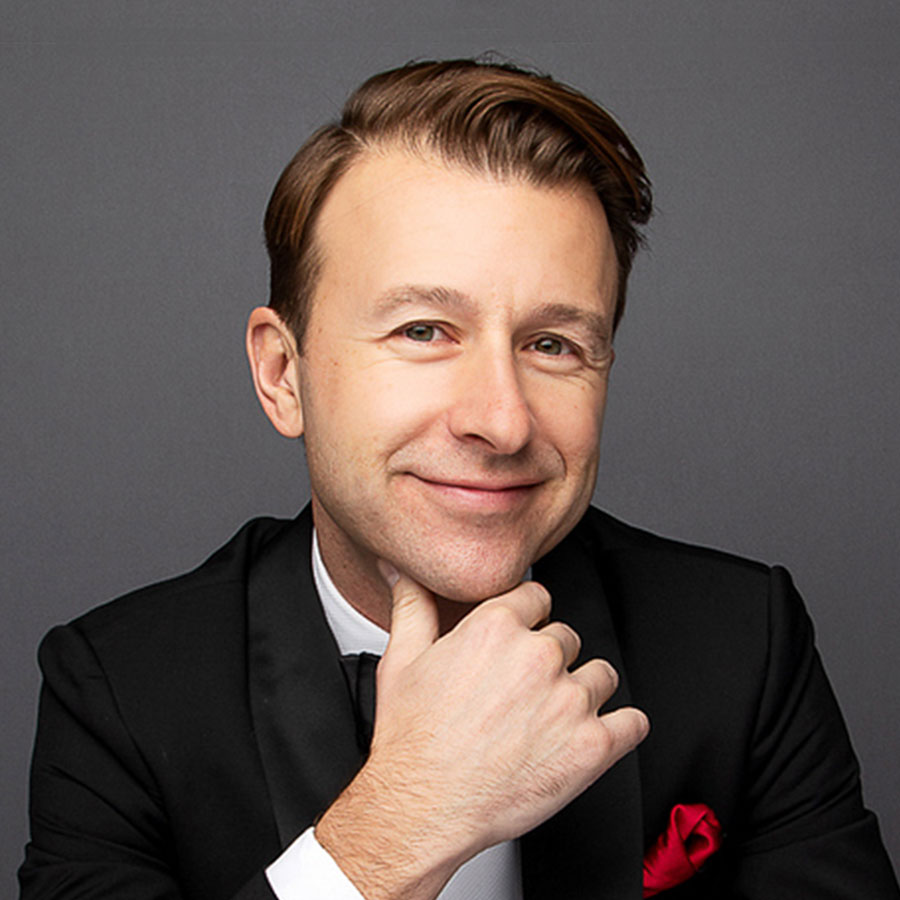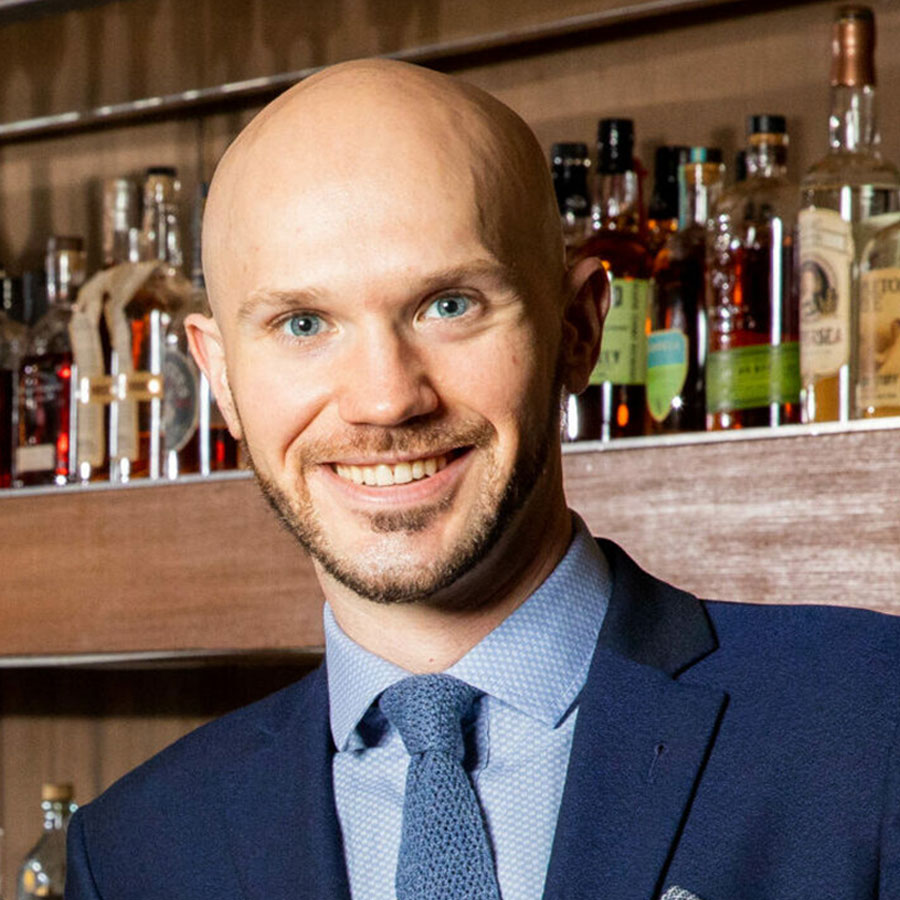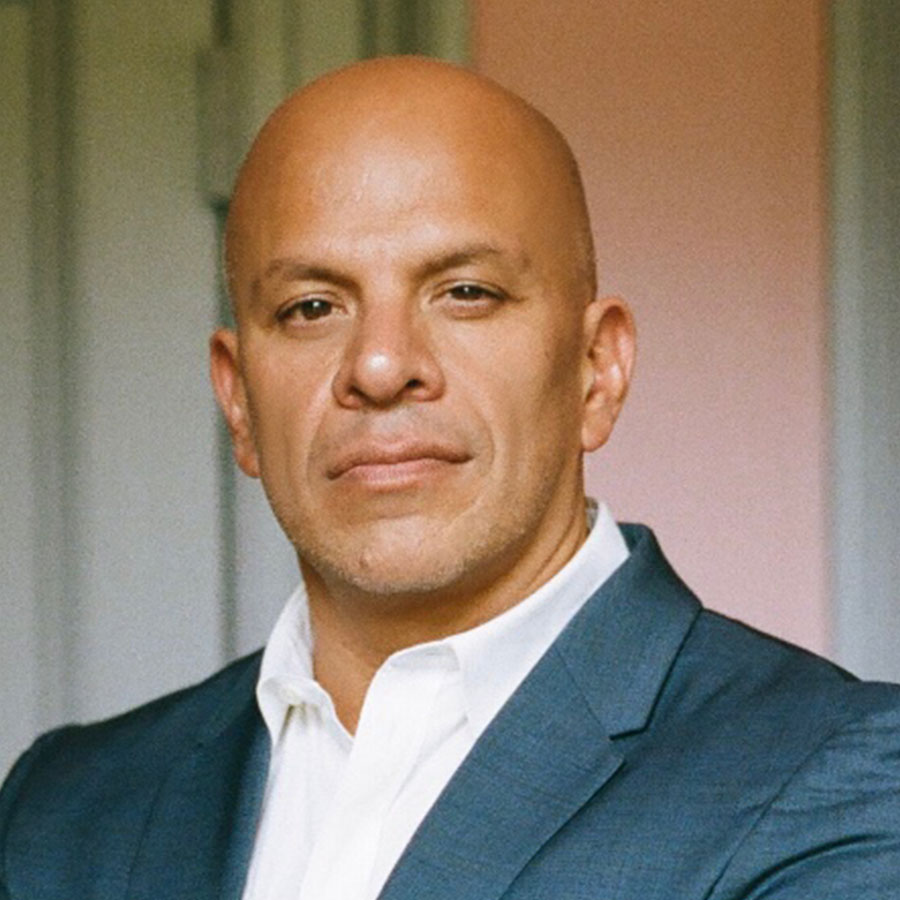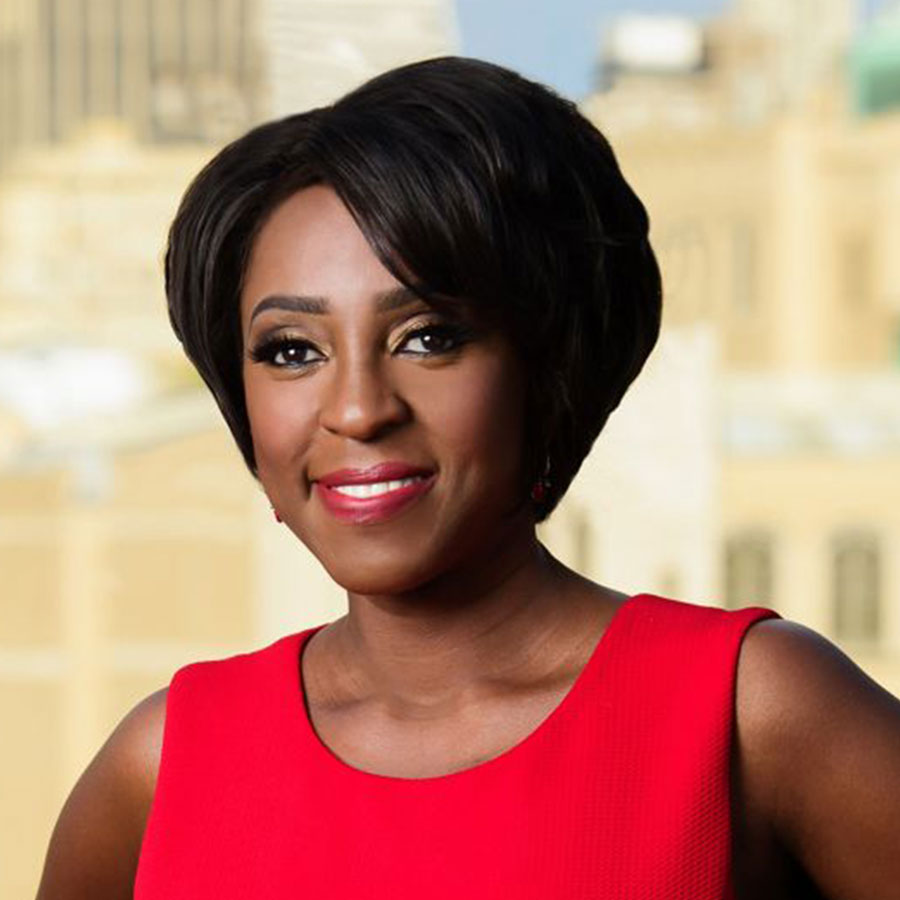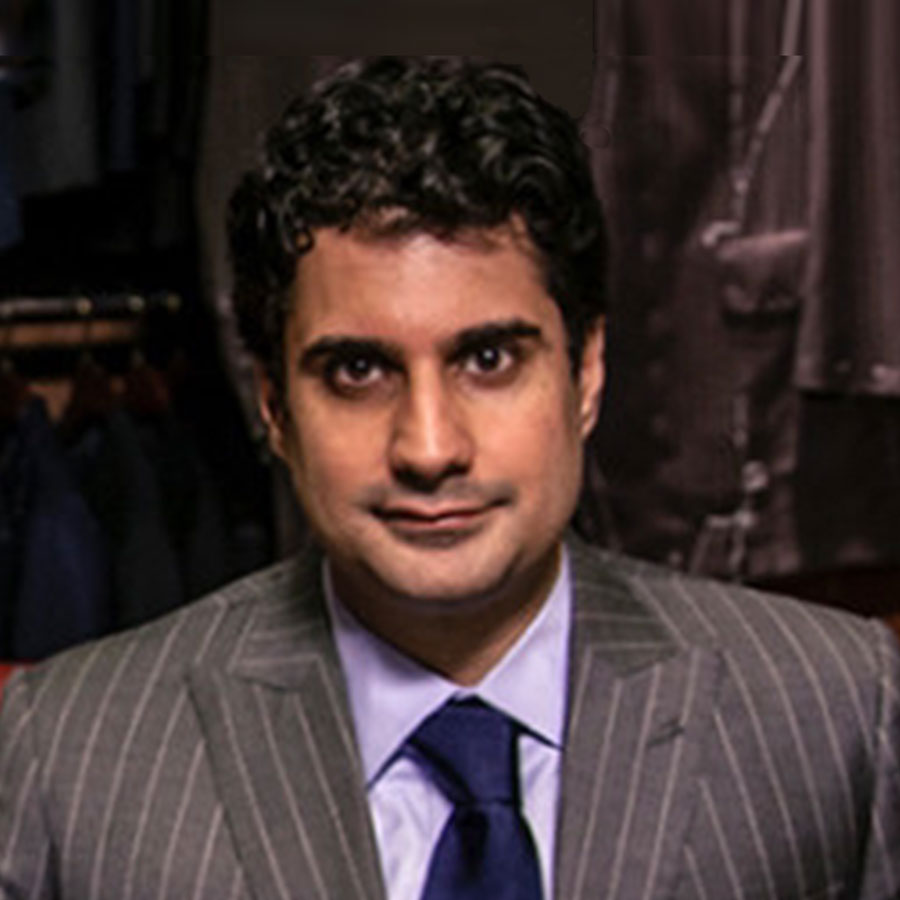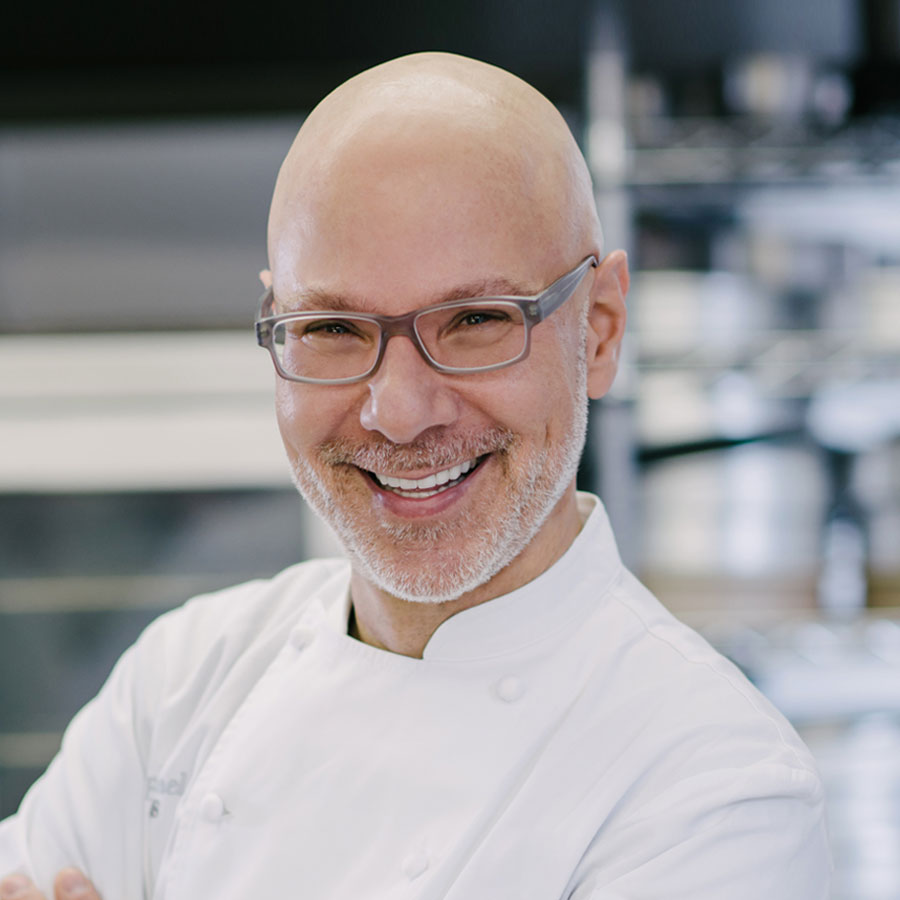Born and raised in southern Holland alongside her two sisters, Muys Snijders grew up steeped in Greek and Roman classics from an early age. Now a seasoned executive with over 25 years of international experience, Muys is the Head of Fine Art & Collections Services at AIG’s Private Client Group. Before that, she launched her own art consultancy firm and served as the Managing Director of Christie’s Americas. Muys has a deep knowledge of the Post War and Contemporary Art market and has held an extensive breadth of key positions allowing her to advise clients across the entire spectrum of their collections.
Muys holds an MA in Art History and Classical Archaeology from Leiden University in the Netherlands, an MA in Arts Management from Greenwich University, and an MA in Art Market Appraisal from Kingston University in the UK. She is also a graduate of the Senior Executive Leadership Program for China from Harvard Business School, Tsinghua University in Beijing, and CEIBS in Shanghai.
Muys is on the Anselmo Academy of Music and the Arts board and is an honorary committee member of the Appraisal Association of America in New York and the Dutch Centre in London. She is also an active member of the Guggenheim Young Collector Acquisition Committee, POWarts, Art Mammas, ArtTable, and the Institute of Contemporary Art in Miami. Muys lives on the Upper West Side with her two children, aged 3 and 4, who are exploring music careers.
1.
Paul & Vince: How did you end up in New York and in your current career?
Muys: I grew up close to Maastricht, on the border with Germany and Belgium, and I studied the history of art, and then classical archaeology, at Leiden University. I was told over and over again that with a history of art degree, how far are you going to get in life? [Laughs.] And then archaeology is on top, right?
And I also kept hearing that it was very important to find a good husband—and I didn’t like to hear that. I started doing management classes too. I took some marketing, a bit of accounting, and some people management, and I enjoyed it—and I was pretty good at it.
After graduating from Leiden, I moved to London to further my studies in art management at Greenwich University. It was all the same basics and principles of management, but specifically for the arts sector. So instead of writing a marketing plan as you’d write it for, let’s say, Unilever, we would write a marketing strategy for the Tate. Or we would write a people strategy for a local museum.
It was a great program and ultimately gave me my competitive advantage within the art market at a very early age. Now, many of these programs are out there—but at the time, there weren’t! I had worked as a student at Christie’s in Amsterdam a couple of days a week, and they saw that I was very hard-working—so they were like, “Why don’t we put you with business development? Because you have a management background.”
So that gave me my “in,” and then before I graduated in London in 2004, I got my first permanent position at Christie’s in London. After many wonderful years there, the team in London supported my move to New York in 2012.
Paul & Vince: What first got you interested in art?
Muys: That was my father! [Laughs.] He loved going to museums, and we would go on holidays to Greece, to Italy—predominantly in Southern Europe. The Picasso Museum in Antibes, the Acropolis museum—my father was very passionate about the Classics. At first, these museum visits weren’t that enticing. However, I discovered that if I followed my father, there were two things.
One was that the visit would go much faster because he would start talking to me about what was in front of us, so it was more interesting.
And then the second thing was that at most of these museums, there was a shop at the end. So if I would stick to my dad—[Laughs.]—he would ultimately buy me a gift from the museum shop!
Through these travels with my father, I studied classical archeology, and which led me to the Ancient Cities program at Leiden, then I did excavations in Boeotia, Central Greece—
Paul & Vince: Really? Actual excavations? Right in the dust and everything?
Muys: Yep! And people don’t understand how you can go from archaeology to mostly contemporary art, which I would say is my real area of expertise now. But it’s very similar.
Where it translates to art history, and being an art advisor, is that you can use those principles and then apply them to modern society and the current world we’re in. A lot of contemporary artists’ works are a testament to what’s happening at this moment in time. Looking at much contemporary art right now, it’s very hard to understand. But you almost have to use the same methodology.
You have to go quite a few levels deep to understand what you’re looking at, and you have to ask the right questions. So, archaeology is very similar to that because you do exactly the same thing. You uncover this item that’s been under the ground for so many years, and you need to place it in that kind of timeframe then and try to distinguish what you’re looking at.
Paul & Vince: That’s fascinating!
2.
Paul & Vince: What does a typical day on the job look like for you?
Muys: Well, there is no typical day when you are working with art and collectors!
When I started at Christie’s in London, I worked in the Client Advisory department, which I fondly call my “Personal Shopper” job. In that role, you work with a small group of ultra-high-net-worth clients that want to build collections, and they give you a list with the things they’re looking for, or you have active conversations with them, like, “You’re looking for a Degas? Do you want the pastel? Or are you looking for a dancing lady? Or a sculpture, perhaps?” Then you go out and try to find these things, and then whenever you have a match, you propose the work and connect the client with the relevant experts. And you also do a lot of the logistics after the purchase.
Many years later, as the head of the Post-War and Contemporary division at Bonhams, I would oversee all the sales, exhibitions, programs, and events. Part of this role is to find potential sellers, then you’re an agent. The other part of it is to attract buyers, nurture the relationship with collectors, identify their taste, and identify what objects might be suitable for their collection.
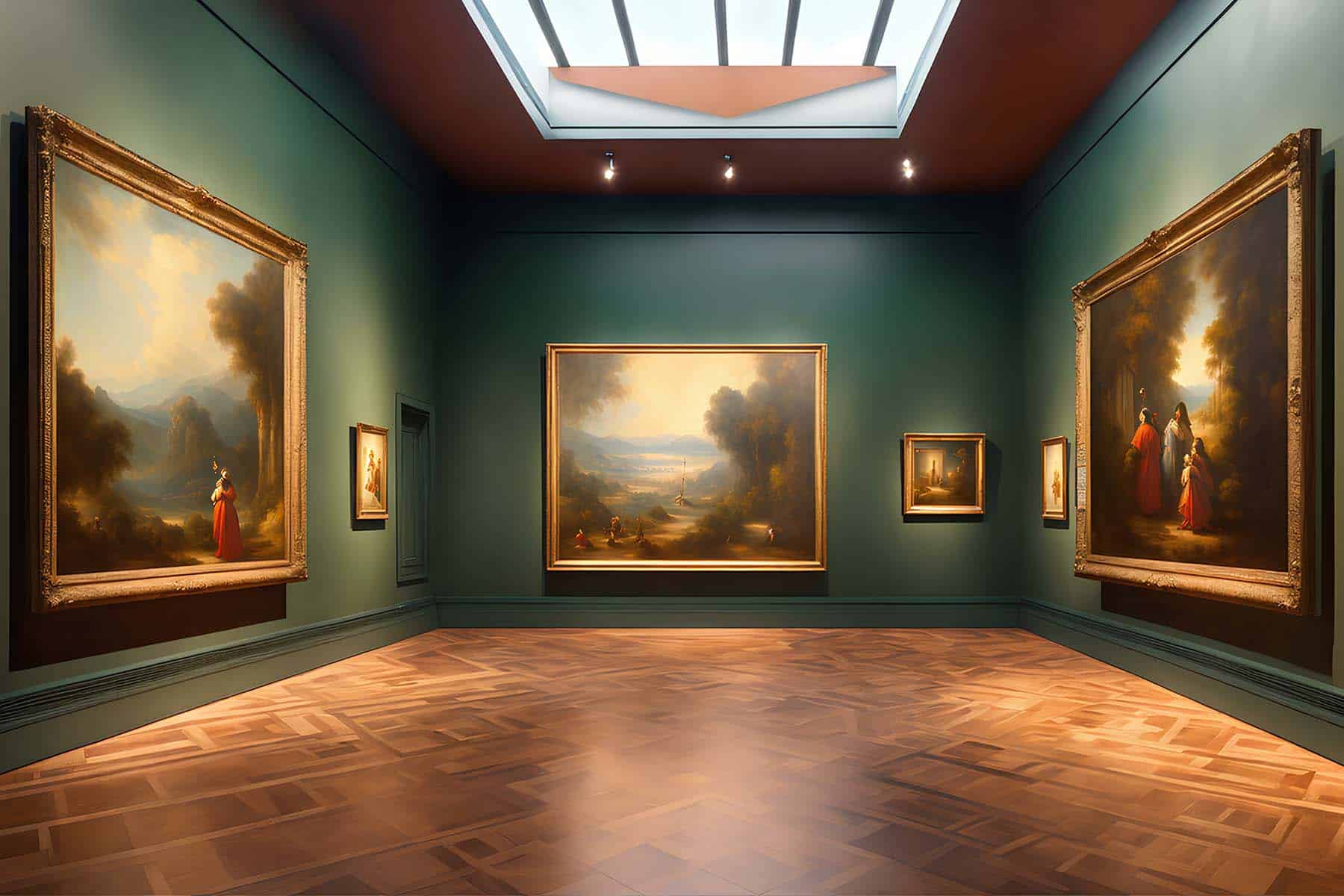
Up to now in my career, I’ve mostly been involved with anything and everything until the hammer comes down and a piece is sold. And what I’m doing now is what happens next, which is taking care of those objects and collections after you’ve purchased them. That means protecting the actual asset from a financial and risk management point of view. You look at what is in a client’s collection and review if it has the right value, and with that, you’re monitoring the market all the time. Then if you have significant market fluctuations, you proactively address this.
Another element is going onsite with clients to look at how the collection is displayed and how it’s positioned in the house—and with that also comes preparing for eventualities and creating emergency plans. It could be a hurricane; it could be a flood; it could be a wildfire. Whenever a catastrophic event happens, we oversee a team that does the pre- and post-event support and services to help out wherever we can.
Paul & Vince: What kinds of questions are you usually answering for your clients?
Muys: They have much to do with “What’s the value?”—and that’s on both sides. If they want to purchase, “Is this good value? Is this in good condition? Does it have the right provenance?”
I would get questions from the potential seller like, “Is this ready to go to market? Do you think this is the right time? Where would this be handled and sold in the best way?”
I’m consistently in a due-diligence mode on behalf of others. I love being in that space because it allows me to research, absorb, learn, and investigate, right? It’s almost like going on an archaeological exploration of the items I’ve got in front of me! Most of the questions I get are, “Is this the right thing to do with my collection?” Generally, the collectors you interact with are wonderful, and they know so much—however, they value your advice and support and generally want to ensure they’re on the right track.
3.
Paul & Vince: Could you tell us a few things that most people don’t realize about your job?
Muys: Yes! People don’t realize that there are so many different reasons to be a collector.
I always say there are five motivations for collecting. The first one is genuine love for the artifact, the craftsmanship, and whatever the artist does. Or they’ll even commission the artist sometimes, like, “I love this art by you, and I want you to do x, y, and z for me.” Those collectors are often quite academic and very involved with their collections and how they’re being looked after and protected.
Another group is motivated by the thrill of the chase! It’s trophy-hunting, outpacing your competitors and finding that rare object, securing it, and outbidding someone.
And a newer type of collector is purely in it for the investment. This is a category that has been growing quite significantly. They’ve purchased objects with a view of potential financial gain in the short to medium term. The item doesn’t necessarily go on the wall—it often goes into a secure storage location where it can be traded, even within those walls, in a tax-advantaged climate.
We’re also seeing a lot of unknown collectors, and by that, I mean collectors who have no clue that they’re collectors. [Laughs.] And those are the most dangerous ones! Because they have a lot of things, and they don’t know they have them. Some of them are hoarders, and some of them are heirs. For example, someone might have a bowl sitting in their attic—in their mind, just a yellow bowl. And you come into the house and identify, “Oh, no, if it is this type of yellow—it could potentially be Imperial Chinese color, which means that this is one of the most important bowls you can imagine!” [Laughs.]
And then there are collectors whose interest is purely decorative. So they often work with an interior designer, and the objects are more for usage, which is a challenge. Because even a decorative object can be so intricate, all the materials used are so special. And the designers have real messages in these objects! So you might see it as, “Oh, this is just my sofa.” But actually, maybe it isn’t just your sofa. So how do you look after it?
So those are the five groups of collectors out there.
Paul & Vince: Right, genuine love for the artifact, the thrill of the chase, investment collectors, accidental collectors, and decorative collectors?
Muys: Yes!
Paul & Vince: That’s such a great who’s-who! Now, what about sellers?
Muys: There are typically three reasons a collector will sell, and we call them the Three Ds: death, debt, and divorce. Or sometimes, in the best-case scenario, there’s a fourth D, which is re-decorating. [Laughs.]
Paul & Vince: Your role is to preserve culture and history while working with these groups.
Muys: Yeah! Usually, when you make a sale, you have to hope the buyer will be a good custodian and look after the piece. But what is great about my current role at AIG is that I get to work with the collectors who have purchased the artworks and help preserve them for perpetuity. Whether the collector consciously purchases an item—particularly if it’s a major piece or a specific example of a specific time period—it’s part of a legacy.
Sometimes it’s like, “Oh—out of this artist’s oeuvre, at least one or two will survive because there’s just so many of them.” But then, with other artists—like Vermeer, for instance, or a Frida Kahlo- there aren’t many in the world. So, if you’re the owner of a Vermeer or a Frida Kahlo, you have a certain level of responsibility on your shoulders. And there are lots of questions that come with that—like, how much do you keep that item to yourself? How much do you open it up to the public? How do you protect it? How do you preserve it? Where do you keep it?
Paul & Vince: What would you say to someone interested in getting started as an art collector?
Muys: I would say it’s important to look with your eyes, not with your ears. Follow your instincts, your appetite, and your interest. I think buying art is a gut reaction. You can never really go wrong if you like your piece. The only thing that can go wrong is that you’re devastated if something happens to it or if you ever have to sell it, and it leaves a big gap in your existence.
And then the other thing is, people always think, “Oh, gosh, I need to have tons of money to start collecting art.”
And I would say no! You can look locally at your art schools and graduates—there’s some really good art out there, even at the more junior level.
People are so nervous about it! Like, “Oh, no, what if I buy the wrong thing?”
Start small! And you will be fine! And guess what? If you like something, then by and large, other people might like it too. And don’t be afraid to be the first to go in a different direction!
4.
Paul & Vince: What are some of your favorite things to do in the city on your day off?
Muys: An ideal Saturday is a gallery stroll, a movie at Soho House, and a walk on the Highline or The Island in the Hudson. For dinner, we often stop at Bottino or The Orchard Townhouse. Lisson Gallery, Marianne Boesky, Gladstone, Hauser & Wirth, Gagosian, and David Zwirner are key galleries you should always see. Their shows are always great whenever you go.
And then the Whitney! The Whitney is amazing. It’s a very special place for us because there is this sculpture called “Standing Julian” by a Swiss artist named Urs Fischer—my kids call it Candle Man.
It’s a giant life-sized sculpture of a man in wax. And it gets lit as an actual candle! They light it every morning and extinguish it every night. And this specific candle was Julian Schnabel, a dear friend of Urs Fischer. My children got so excited about this—it was almost like a weekly thing, like, “Oh, can we see Candle Man? Can we see Candle Man?”
So we’d been seeing Candle Man as he was getting smaller and smaller and smaller, and at some point, it was just wax on the floor, and there was no more Candle Man. And then I had to explain to my children, like, “What happened to Candle Man?!” “He’s gone, you know?”
Paul & Vince: How did they take the loss of Candle Man?
Muys: Not very well. [Laughs.] But the good news is that technically, the artist allows the owner to bring in a new sculpture. We don’t know when Whitney will bring in a new Candle Man.
Paul & Vince: That’s amazing! And when you take your three- and four-year-old to the gallery, it’s like you’re revisiting your childhood.
Muys: Yes! I take them to art fairs, galleries, and museums—I take them everywhere! [Laughs.] So, they’re used to it now; they know not to touch things and to ask first. Particularly in contemporary art, so many things speak to them. And I love seeing the items through their eyes! Because they see things that I don’t see. And they’re not biased! So they interact with the pieces in their own way, and I love that. There’s nothing I love more than soliciting their reactions.
They love Jeff Koons with all his puppies and hearts and balloon dogs. And then they want to have a book about the balloon dog, and whenever there’s a balloon man, they want to have a puppy dog made. That’s cool, too. You see them start pointing out at things and saying, “Oh, Mummy, we’ve seen that before!” Or, “Mummy, this is art!”
…and one more, Just For Fun
Paul & Vince: If you could take a vacation to another time period for a few days, when and where would you want to go?
Muys: Oh, yeah—that would be Ancient Greece. I wrote one of my dissertations about the position of women in Ancient Greece during the classical period. Athens was a very male-driven society, with big forums and early stages of democracy. Then there were three levels of women within that, with different roles—the housewife, the concubine (who seemed to have the most power), and, sadly, the servant or the slave.
And at the same time, you had a place like Sparta, which was a total matriarchy because the men were all out at war at all times, so it was a society truly run by women. So yeah, that whole thing fascinates me. [Laughs.] I studied that whole time period quite extensively. I’d probably want to see both, right, and compare them.
Paul & Vince: So you could tour, hang out with everybody, and find out who had the best deal?
Muys: Exactly! Now, who’s got the power? [Laughs.] Because I suspect that—and there’s some evidence for this—some of the women in Athens were intrinsically involved in writing the speeches for the men. So I would love to be a fly on the wall and to see that whole dimension—and then I’d be thinking, what has changed? Is it the same as what we have now? How different are we?
Paul & Vince: So what would you do while you were there?
Muys: Well, it depends on which group of women I’d be affiliating with, right?
If I weren’t going to be a fly on the wall, I would walk around the streets—eat the food, drink the coffee. Sit in the square, and observe what’s going on around me.
And then I’d start to make friends if I could. [Laughs.]
Paul & Vince: Did they have coffee in Sparta?
Muys: I don’t know if they had coffee!
Paul & Vince: You may have to bring that to them!
Muys: Maybe! I do know where I would go! I would go to the water well because you get the gossip here! All the women would have to go to the well at some point so that I could find out everything.
Original artwork by Jolisa Robinson, Gavriani-Falcone Team Marketing

